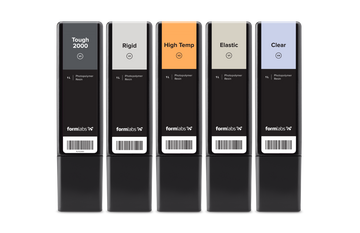Unlike jigs, fixtures are used to hold a workpiece in place during operations. They ensure that the piece remains stationary, allowing tools or machines to function accurately. Fixtures are specifically designed to fit a particular part or shape, ensuring that the workpiece is held in the exact position and orientation required for the manufacturing process. An example of where this is essential is during milling or CNC machining.
3D printing: a perfect match for jigs and fixtures
Both jigs and fixtures are bespoke solutions with strict requirements that can be perfectly addressed by 3D printing. These are some of the areas where the advantages of 3D printing are most beneficial:
Fast turnaround time: Design iterations can be created quickly allowing for rapid prototyping when creating new jigs and fixtures or fine-tuning existing ones.
High degree of customization: When 3D printing parts, you have the design freedom to create custom jigs and fixtures that perfectly match the product and process you are optimizing for.
Cost-efficient for low-volume production: Traditional manufacturing methods can be costly when producing low volumes of specialized tools. Since 3D printing doesn't require new molds or dedicated machinery for each design, it can produce low quantities of jigs and fixtures at a fraction of the cost.
Integrated and complex designs: 3D printing enables features like undercuts, internal channels, or intricate geometries that can be difficult or impossible to realize with traditional manufacturing. Allowing you to create jigs and fixtures that prioritize functionality without worrying about design constraints.
On-demand production: Rather than keeping a vast inventory of jigs and fixtures for various tasks, manufacturers can maintain a digital library. When a specific tool is needed, it can be printed on-demand, reducing storage space and associated costs.
What are the advantages of carbon fiber composites for jigs and fixtures
Carbon fiber composites are a class of material that include chopped-up carbon fibers embedded into a polymer, in a way that makes them easy to print while leveraging the advantages of each material. Alongside the usual benefits of 3D printing your jigs and fixtures, carbon fiber materials have some additional characteristics that make them well-suited to such demanding applications:
High-performance properties: Parts printed using carbon fiber composites have high strength, stiffness, and heat resistance, all essential properties for tools undergoing rigorous usage in a commercial setting.
Weight advantages: Carbon fiber is lightweight when compared to materials with similar performance characteristics. This leads to lighter tools and increased efficiency on the production floor.
Durability and longevity: The robustness of carbon fiber composites ensures that your jigs and fixtures can endure the stresses of the manufacturing process for a longer duration compared to those made from traditional materials.







